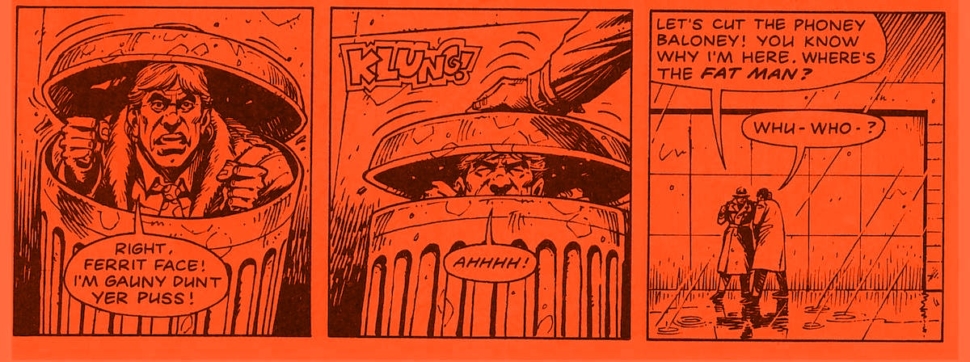Every once and a while over the years, I’ve gotten a wild hair up my ass about the fact that John Wagner has never managed to make it into the Will Eisner Hall of Fame – one of the more prestigious positions to achieve in the western comic book industry. Sure, he’s made the long list a few times – he’s been lightly considered, perhaps – but ultimately, the crime still floating around is that John Wagner officially remains uninitiated among the golden gods of comics, and that? That is just bullshit.
This is a ramble that friends and unfortunate family have heard me grumble about after a drink or two: that Wagner is one of the minds that, over the course of a career spanning half a century, has molded and raised the bar on comics and what we can expect of them, but remains criminally unrecognized for his contributions. In response, they usually say, “What… the guy who did Judge Dredd?” And then I scream.
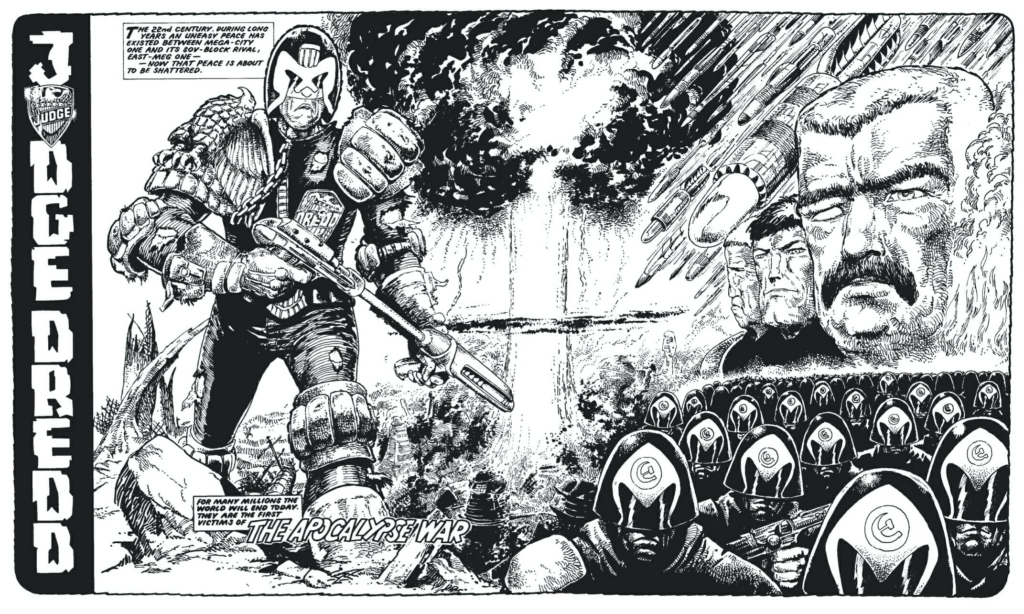
I don’t mean to be dramatic here, but to call John Wagner simply “the Judge Dredd guy,” as he is often referred to in comics circles, is about as reductive as saying, “Jimi Hendrix knew some pretty solid chords.” There’s no denying the influence of Judge Dredd, but to stop there when considering Wagner’s career and contribution to comics is to be shockingly reductive, and to discount a multitude of genre-defying feats of storytelling… but I might be getting ahead of myself.
Born in the U.S., Wagner and his family arrived in Scotland when he was a kid, and it was there that he first entered into the comic biz courtesy of an editorial job at legendary UK publisher DC Thomson & Co. At DCT, he did everything from ghostwriting horoscopes to serving as a sub-editor of romance comic Romeo; after a few years, he decided to broaden his wings by becoming a freelance writer alongside a fellow sub-editor — a guy y’all might know by the name of Pat Mills — from the company.
Alongside Mills, Wagner would freelance for IPC Magazines, Ltd, the biggest game in British comics of the period. The two wrote strips for titles including Whizzer & Chips, Tammy, Valiant, and Lion, becoming a mainstay of the publisher’s many titles before Wagner was tempted to join the company as staff, editing girls comics Sandie and Princess Tina. He also developed Battle Picture Weekly alongside Mills, and kept his hand in writing trips like Bella at the Bar, and One-Eyed Jack (Think Dirty Harry, but for young British kids).
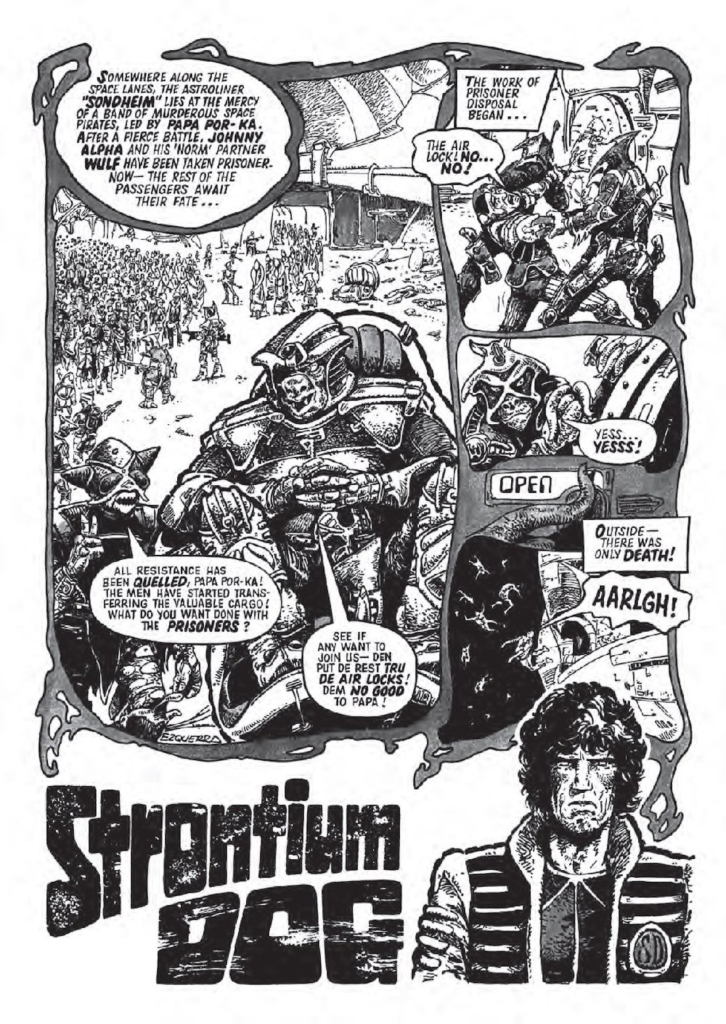
It was his relationship with Mills that got him involved in the nascent 2000 AD when the latter was developing the science-fiction title; having returned to freelance life — and writing the acclaimed “Darkie’s Mob” strip for Battle, which remains one of the most beloved British war comics of all time almost 50 years later — Wagner didn’t just create Judge Dredd for the weekly comic, but also the comedic action adventure Robo-Hunter and, courtesy of a merger with the ill-fated Starlord anthology, Strontium Dog; as a result, he quickly became one of the central creators of 2000 AD within a year of the iconic title’s launch in 1977.
That still wasn’t enough for him, as it turned out, and within a handful of years, Wagner (alongside his writing partner of the time, the similarly talented Alan Grant) was responsible for so many of IPC’s long-running serials that management demanded the creation of multiple pseudonyms in order to disguise just how much material came from his typewriter. In addition to Dredd, Strontium Dog, and Robo-Hunter stories, the Wagner/Grant team was also writing Ace Trucking Co., The Helltrekkers, and Anderson, PSI Division for 2000 AD, “Doomlord”, “Joe Soap, Computer Warrior”, “Manix”, “The Fists of Danny Pyke”, and “The House of Daemon” for Eagle; The “Thirteenth Floor”, and “Monster”, for Scream; “Dan Harker’s War”, for Roy of the Rovers; and “Fight for the Falklands”, and “Invasion 1984”, for Battle. Outside of his partnership with Grant, he re-teamed with Pat Mills to launch Doctor Who Weekly for Marvel’s UK operations — adapting scripts they’d pitched unsuccessfully to the BBC for the TV show. It was a busy time, the 1980s.
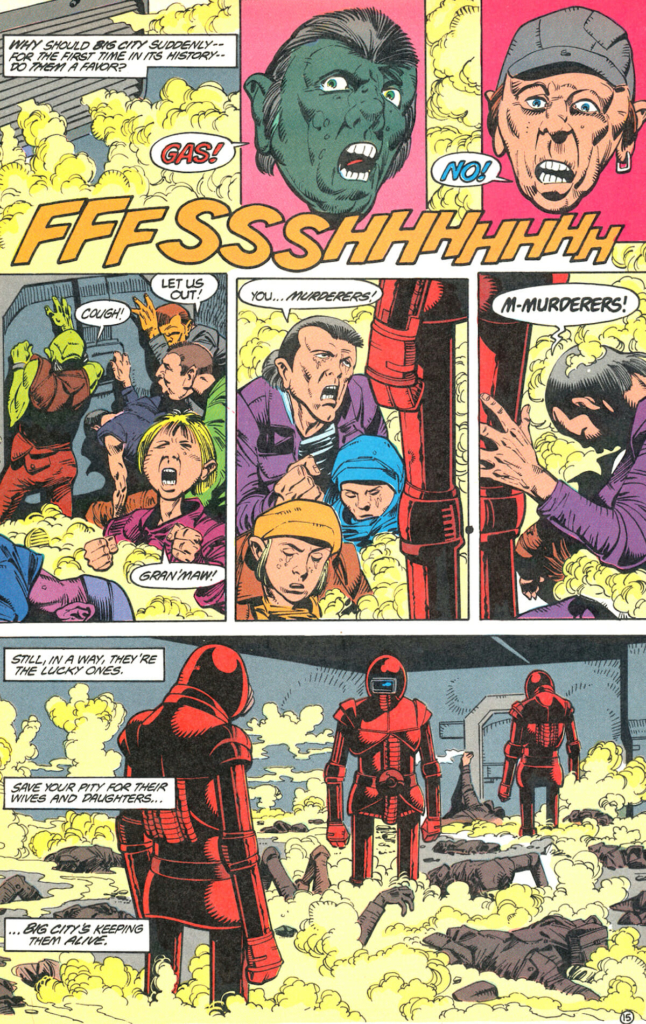
Not so busy that Wagner and Grant didn’t pursue other ambitions, however. The two were part of the so-called British Invasion of the American comic industry in the late ‘80s, creating Outcasts for DC and The Last American for Marvel’s Epic imprint. (They also co-wrote Detective Comics for a year, as well.) Although Grant would maintain more of an American presence when the two writers started writing separately in 1988, Wagner would continue to write for a number of U.S. publishers for the next decade or so, whether it was becoming an unlikely mainstay of Dark Horse’s Star Wars line in the 1990s courtesy of a number of Boba Fett projects — he also wrote Xena: Warrior Princess for the company, surprisingly — or co-creating the graphic novel A History of Violence for DC’s Paradox Press imprint with artist Vince Locke, which would be adapted into David Cronenberg’s Oscar-nominated movie of the same name, years later.
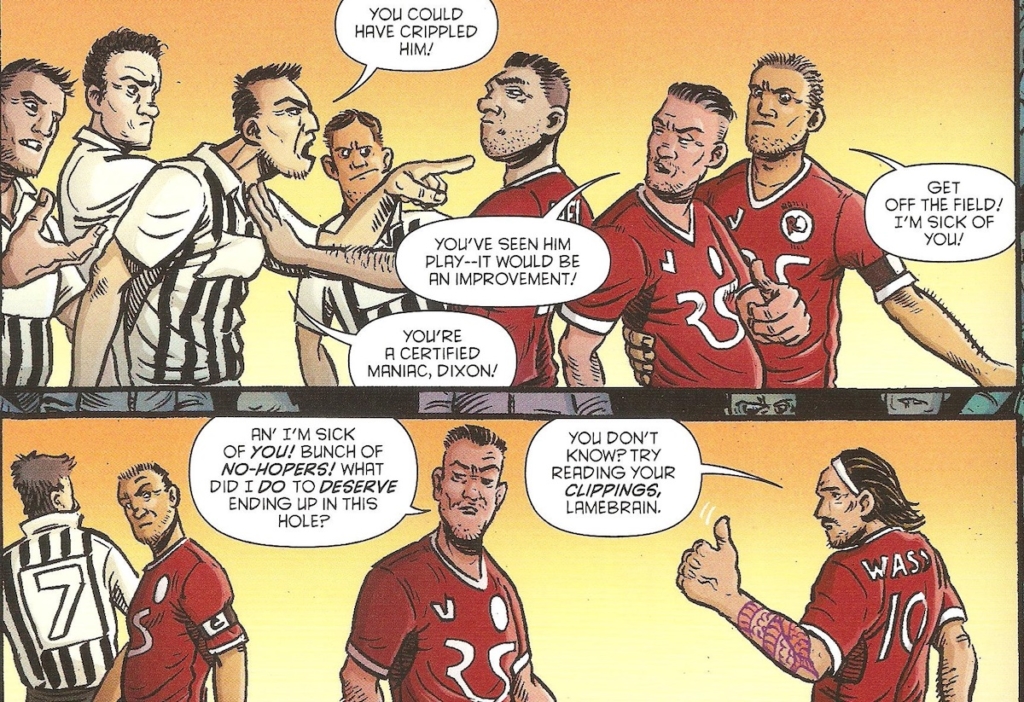
In the past couple of decades, Wagner has been more focused in his output, with the majority of his time spent on “Judge Dredd” and “Strontium Dog” for 2000 AD (as well as the occasional related strip in its sibling title, the Judge Dredd Megazine — a title he co-created and acted as a creative consultant on way back in 1990), but he’s still throwing out the occasional surprise, as anyone who’s read his charming soccer comic Rok of the Reds will tell you. For a creator in his 70s, he’s still as sharp as ever, and just as eager to keep readers on their toes.
Here’s the thing, though: even after all that history, and with all of that information being readily available to those willing to give it a gander, Wagner is still rarely given the plaudits due to him. I suppose, in a way, this is partially due to many of these titles being (pardon the wordplay) foreign to many readers outside of the UK – or, perhaps because they’re not exactly the next big thing, with Wagner’s career stretching back to the late 1960s. In my mind, this serves as no excuse: when so many readers are calling for diversification of genre content or expressing a desire for more of the “world outside their window” style of stories that publishers like Marvel have built their fortune upon, the comics of John Wagner are, in many cases, what truly fit their bill.
Wagner’s stories – which are all generally genre-leaning, as a result of being largely published in British sci-fi and fantasy anthologies, or by American adventure comics publishers – are about the world outside our window, because there is an understanding that even – perhaps especially – with the added existence of super-heroes, villains, Humphrey Bogart impersonating mad men, or space bums, the “world outside our window” perpetrated by comics should always be undeniably absurd, cruel, hilarious, and mental…because that’s what our world is normally, as well. Wagner may not give a flying fuck about your need for genre entertainment, but he’s more than willing to placate you in order to tell a story because, above everything else, John Wagner loves some well-placed, entertaining window dressing.
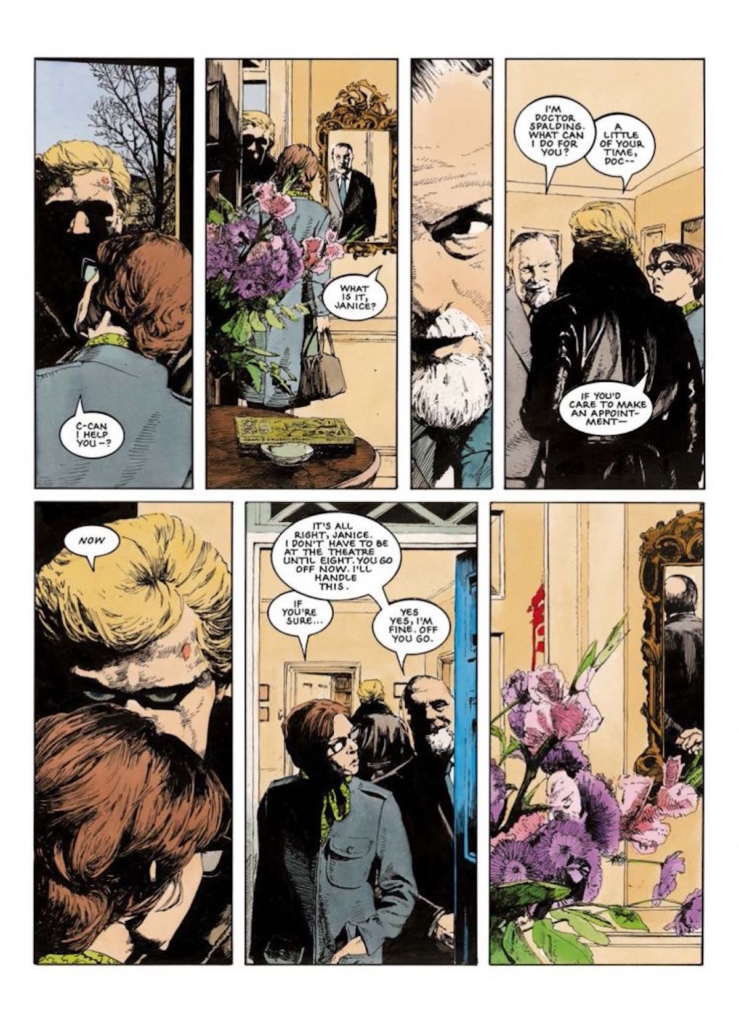
One way in which he pretty often accomplishes this is the age-old British tradition of bringing everything back to class – a theme surprisingly easy to insert into sci-fi, considering that most visions of the future are presciently over-populated, arid, or oppressive. Pick up any collection of Strontium Dog (which you should already be doing, tout suite) and it’s abundantly clear that – while, yes, there are mutants and, yes, it’s in space, and, yes, there’s time travel and witch cults and aliens and literal devils – the story itself all comes back to the feeling of trying to get by in a society that is hell-bent on ignoring and devaluing the working class in its very structure.
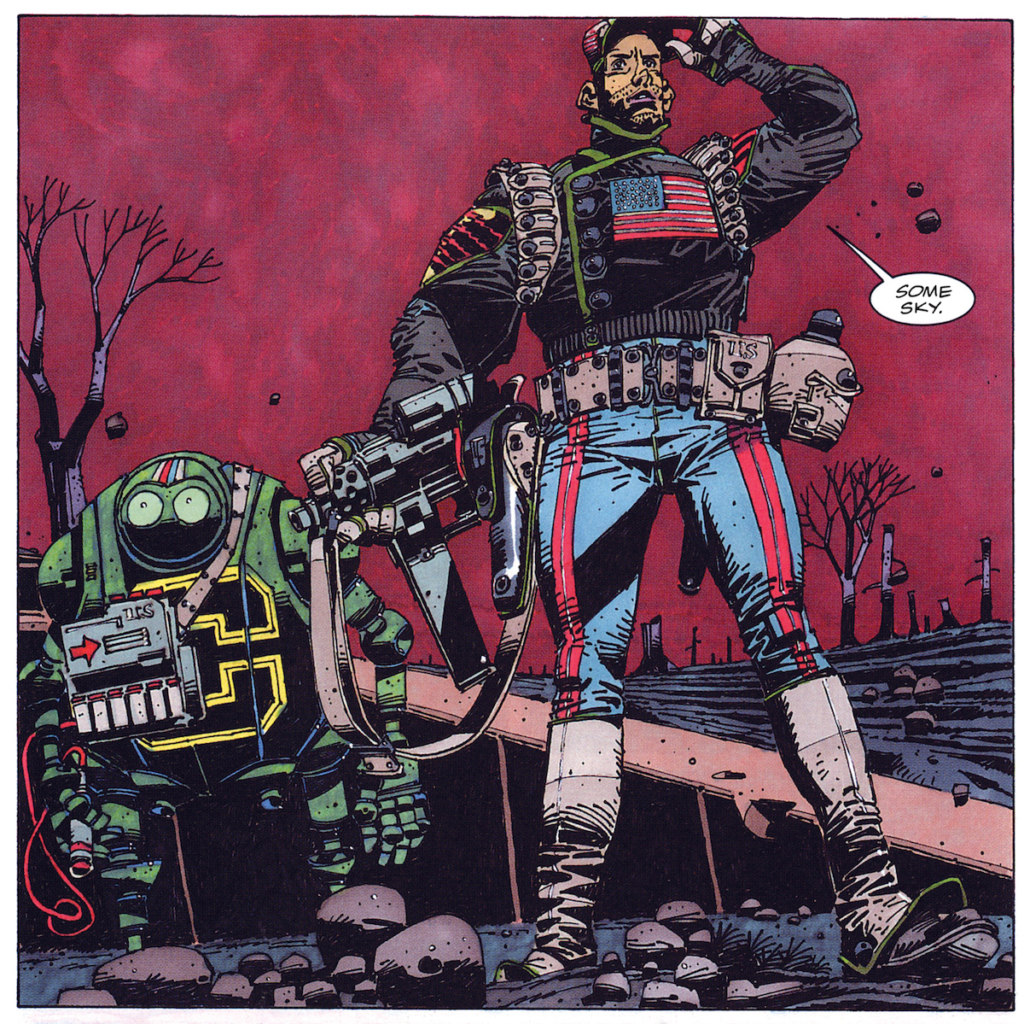
Even beyond this constant narrative of the plight of the working class – something also found in series such as “The Thirteenth Floor”, “Outcasts”, and to a surprising extent, even “Judge Dredd” – Wagner’s interest in writing about the class system and the failures of societal expectations in “Strontium Dog” extends to explore the social climbing of what was once considered the middle class, as well as disability rights and the way in which they’re often disregarded (or utterly ignored) by the mainstream, ultimately a story about bigotry as a weapon perpetuated to maintain status quo…all while never losing it’s dramatics, great sense of humor, and of course, the bad sense of humor too. (Who are we to forget a character named Kid Knee, after all?)
Wagner’s humor isn’t just limited to science fiction. Despite its unfortunately limited reach across the Atlantic, The Bogie Man – his 1990s series co-written with long-time writing partner Alan Grant and illustrated by Robin Smith, with Cam Kennedy lending a hand for a brief run – takes post-war noir (set in Scotland, with everything that comes with that in the traditional Wagner/Grant sense of celebration and parody for their shared home country) and utilizes the audience’s investment in the genre as a wonderfully fucked up Trojan horse for the story he is really trying to tell, sneaking in political themes, social commentary, and multiple jabs at the genre itself. Along with similar titles such as Al’s Baby, it’s an example of Wagner delight in the potential to flip the script, using humor as the window dressing to make the genre material shine as something unique among its peers.
Ultimately, it all boils down to the fact that Wagner is a writer who, as a matter of course, tackles stories as multi-layered, multi-faceted animals. For every story that you begin reading and think you’re being told one story, there’s a fair chance that, by the end, you’ll get something entirely different – or, at the very least, what you were expecting plus. This is particularly true when it comes to the longer-running pieces of his career such as Judge Dredd or Strontium Dog which have the breadth to grow and shift fluidly over the course of decades, but it can also be said for any of the many stories he’s spent time developing – continually offering up an “aha!” moment that feels like he’s in it himself and joining the reader on the discovery of what he has up his own sleeve.
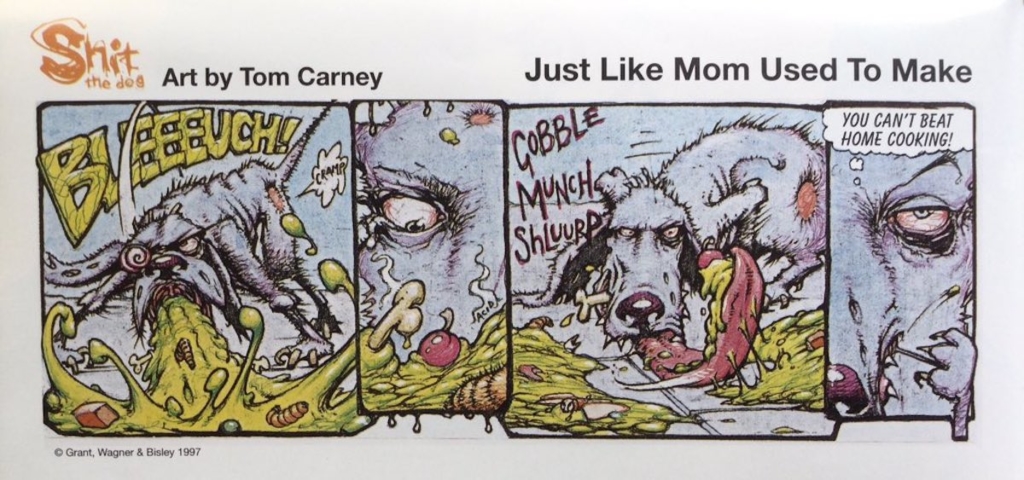
This same fact is what allows for such a wide and varied body of work to stand the test of time, with things like One-Eyed Jack, Ace Trucking Co, Bob The Intergalactic Bum, or one-off jokes like I Was a Teenage Tax Consultant to still be enjoyable decades later and after being entirely separated from their original context, or lost largely to falling into the shadow of larger projects. It’s rare to find a Wagner story that isn’t, at the very least, entertaining, if not revelatory in terms of how surprising and enjoyable it ends up being.
Of course, the fact that there are enough projects to be lost to his own larger work in any retrospective is in itself a feat, with that restless energy and creativity coming through in that he continues to come up with new stories to compete against his own back catalog. One could argue that, while even Wagner’s contributions to his own Judge Dredd over the years have dwindled in terms of frequency (allowing for some wonderful contributions from writers like Kenneth Niemand or Rob Williams who, for my money, embody the Wagner spirit of the characters entirely), it can never be said that the concepts he presents in his newer stories for the series don’t continue to be unique, whether in form or function.
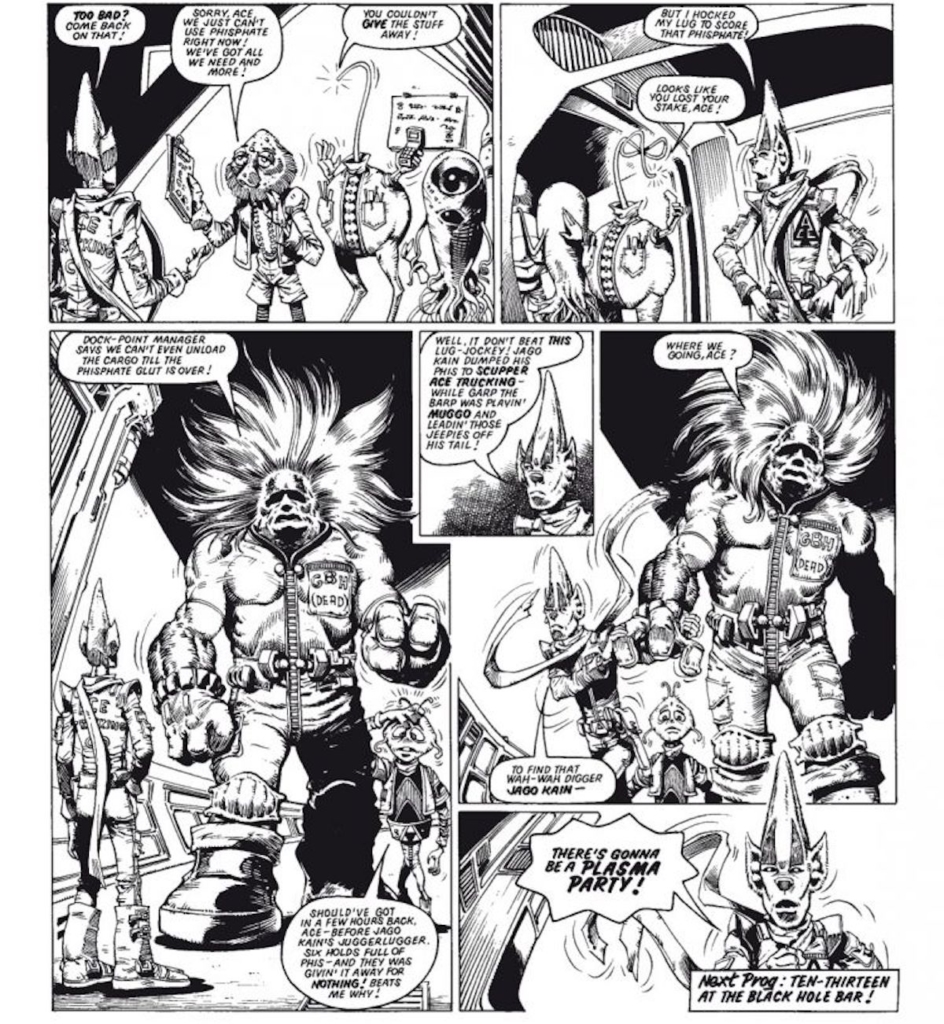
For every years-long dedicated project like the Dredd storyline that started in 1982’s “Block Mania” and ended in 2012’s “Day of Chaos” – yes, an arc that took three decades to find resolution, and still reverberated afterwards! – there will always be something unexpected (and often goofy as fuck) like Banzai Battalion or Shit the Dog to fall in between and shake things up, allowing for a breath of fresh air that might be jarring, but is never unwarranted. In so many ways, Wagner’s restlessness and inability to rest on his impressive laurels and reputation have proven him to be an innovator in the same spirit as some of comic book’s noted greats – regardless of whether it looks the same as one might expect on paper.
At the end of the day, you’ll still call John Wagner “the Judge Dredd Guy,” and if you don’t, then somebody else will. If that’s going to have to be the case, then we may as well accept that in so many ways, even just looking at his career through the lens of Dredd, Wagner still embodies the spirit of Will Eisner better than most. It’s hard to deny the connective tissue between Dredd and Eisner’s own iconic The Spirit, after all; both are/were weekly strips – Dredd has run through hell and high water and nearly uninterrupted for 46 years by this point – created as in theory, action-crime-adventure serials that have found the space to step outside their boundaries in thrilling and inventive ways that confounded expectations.
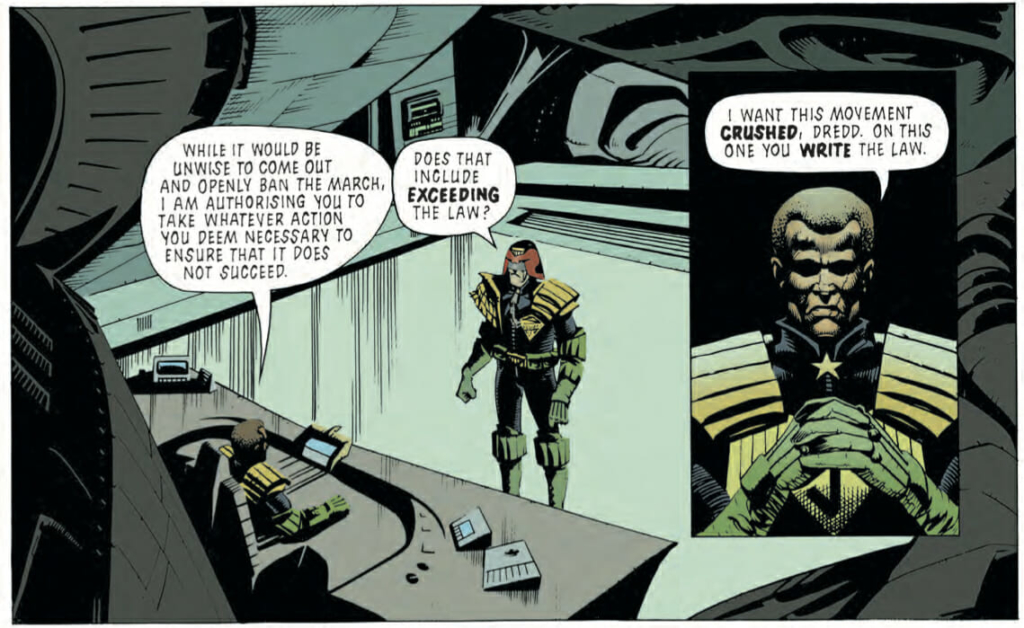
In the same way that Eisner created The Spirit as a crime series that, increasingly in the post-war year, became given to both whimsy and multi-directional focus that created an entire new field of comics storytelling, Wagner has done with Dredd, with both strips often ignoring the title character for flights of fancy or dérives into the lives of side characters and themes that not only enrich their respective fictional worlds, but transform the strips themselves into bold explorations into the potential of real-time storytelling medium and examples of the creativity, dedication, and unexpected magic to be found in the wonder of comics.
I’m sure that there will be a bit of fuss made about even the notion that the creator behind both a future fascist Dirty Harry character and Shit the Dog are even on the same scale deserving comparison to Will Eisner. But frankly, my response to that is to ask those upset to drop the pretense and open their eyes just a little bit wider to see the bigger picture; because in so many ways and in so many joyful no-fucks-given forms, John Wagner has managed to quietly and covertly live out the spirit (no pun intended) of the eponymous Eisner Hall of Fame in a way that few have managed before him.
So c’mon you cowards. The proof has been there for decades, literally and often only, in black and white. What are you waiting for?
(And get Alan Grant in there while you’re at it! Jeez, people!)
